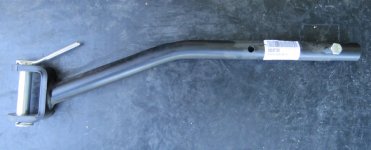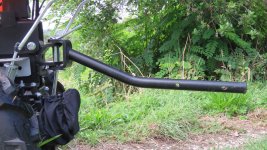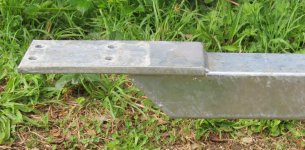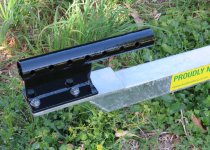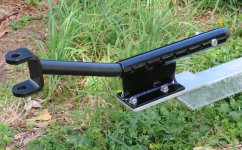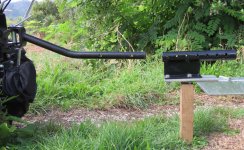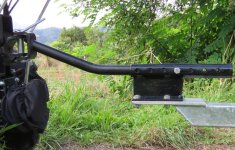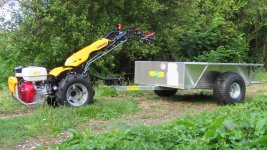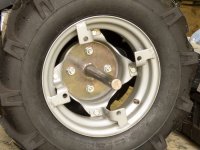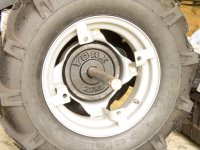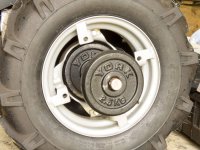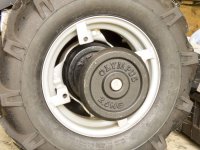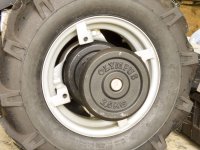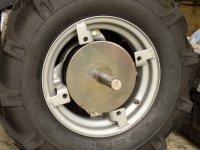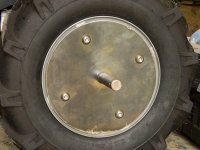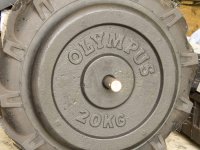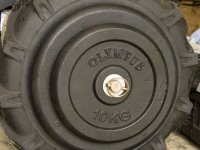Hi Tandem

Welcome to this great forum - and congratulation with your new tractor!
As I read your posts from 2016, I got the impression that you have been through many of the same considerations that I went through, when I was looking for a 2-wheel tractor back in 2010. I feel confident that you have made a very good choice by getting a Pasquali XB40, and I hope that it will live up to your expectations, and serve you well for many years to come. As I have used my BCS 740 for 214.6 hours now, please allow me to convey some of the experiences that I have gathered, since I got my tractor in July 2011. Perhaps some of my experiences can also be helpful to you. If you haven't read them already, there is a lot of useful information in some of the older threads in this forum.
I use my tractor in the front-PTO (mowing) mode only, either for mowing or sweeping. Especially by mowing, I found the ground clearance under the engine very small using the standard 5x10x20" wheels. I changed them to the 6.5x12x23" wheels, and that almost doubled the ground clearance. As an extra bonus, it adds around 15% to the ground speed.
The steering brakes on our tractors are normally set up for the rear-PTO (tiller) mode, which means, the when you turn the handlebars to the front-PTO mode, the steering brake lever on the right-hand side handlebar will brake the left wheel, and vice versa. One can easily get used to that, but if you mainly use your tractor in the front-PTO mode, you might consider swapping the cables. I did that as I changed to the larger wheels, and it is no big deal, if you swap the cables at the brake drums.
You are absolutely correct about the PowerSafe clutch; you do not have to worry about it getting stucket. The traditional double-cone clutch is a mechanically activated dry clutch, where a strong large spring engages the clutch by pressing the two cones together when the clutch lever is released. To disengage the clutch, you pull the clutch lever towards the handlebar, thereby compressing the spring, allowing the cones to separate. To prevent the clutch from getting stucket, a small clip in front of the clutch lever allows you to leave the clutch disengage, which is recommended if the tractor is left unused for a longer period of time, especially in humid conditions.
The PowerSafe clutch on the other hand, is a hydraulically activated wet multi disk clutch, where oil pressure engages the clutch, by pressing the disks together when the engine is running and the clutch lever is released after the OPC-lever has been pressed towards the handlebar. When the engine does not run, the oil pump does of course also not run. This means, that even with the clutch lever released, the clutch is still disengaged and it cannot get stucket, and that is why the lever need no clip. When the engine is running, the oil pump produces 6-9 bar (87-130.5 psi) of oil pressure, which at first bypasses the clutch through a pressure relief valve, leaving the clutch disengaged. Probably for safety reasons, you have to go through a 3 step procedure to engage the clutch:
- First you pull the clutch lever towards the handlebar
- This mechanically allows the OPC-lever to be pressed towards the handlebar
- Finally the clutch lever is released, while holding down the OPC-lever
The clutch lever and the OPC-lever, are each connected to a separate valve. When both valves are open, (i. e., the OPC-lever is pressed down and the clutch lever is released), oil pressure will compress the clutch disks, engaging the clutch while the pressure relief valve closes. As the two levers just actuates small valves, they need very little force to operate. To disengage the clutch, the clutch lever can be pulled, the OPC-lever can be released, or both, as this will close at least one of the valves, preventing oil pressure from engaging the clutch. At the same time, the pressure relief valve will open, as the oil pump is still running. When the engine is shut off, the clutch will disengage, as the oil pressure will disappear. This is the opposite situation compered to a tradition clutch, and can be a little counterintuitive at first.
I think most of us have had the same experience as you, when it comes to finding the "sweet spot" of the PowerSafe clutch. The two valves operated by the clutch and OPC-levers, are not of the on/off type, but my experience tells me, that they have a smaller range between fully disengaged and fully engaged, compared to at traditional clutch. This makes it more difficult to operate the clutch smoothly. My experience is though, that this was more of a problem when my tractor was new, whereas now, I can engage and disengage the clutch much more smoothly - more or les as with a traditional one.
You should be able to adjust the point where the clutch engages on the clutch lever, just where the cable begins. The clutch was probably adjusted correctly at the factory, but after a short break-in period, your clutch cable might need to be adjusted. I did that once shortly after I got my tractor, and it has worked perfectly ever since.
The braking issue when disengaging the clutch, has been one of the big topics in this forum, and if you haven't read it already, you might find a lot of useful information in the "Powersafe" thread in this forum. In short, this feature was installed by BCS, in order to comply with EU safety regulations.
Best regards
Jens
